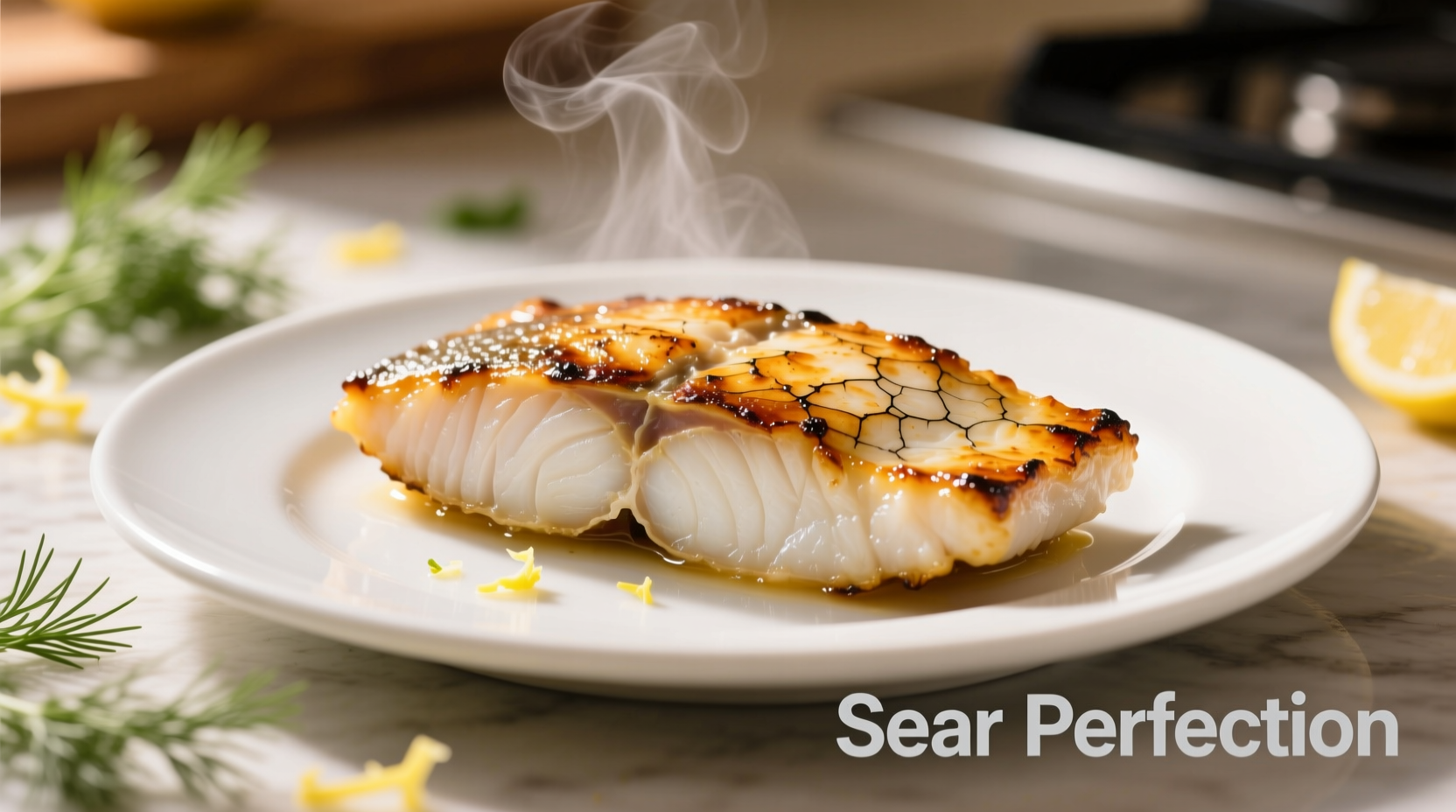The Complete Guide to Cooking Cod Fish Like a Pro
Cod fish offers delicate flavor and flaky texture that makes it a kitchen favorite, but improper cooking leads to dry, tough results. This guide reveals professional techniques that ensure moist, flavorful cod every time—whether you're pan-searing, baking, or grilling.
Why Cod Deserves a Spot in Your Weekly Meal Rotation
Cod ranks among the most versatile white fish available, with mild flavor that absorbs seasonings beautifully while maintaining its distinct character. According to the U.S. Food and Drug Administration, cod provides high-quality protein with just 90 calories per 3-ounce serving, making it an excellent choice for balanced diets. Its firm yet tender flesh holds together during cooking better than many delicate fish varieties, forgiving minor timing errors that would ruin more fragile species.
Essential Preparation Checklist Before Cooking
Successful cod cooking starts long before it hits the pan. Follow these preparation steps for optimal results:
- Selection: Choose firm, translucent fillets with no fishy odor—only a clean, ocean-like scent
- Thickness matters: Standard 1-inch fillets require different timing than thin or thick cuts
- Drying: Pat fillets thoroughly with paper towels—moisture prevents proper searing
- Temperature: Let cod sit at room temperature 15 minutes before cooking for even heat distribution
- Seasoning timing: Salt cod no more than 10 minutes before cooking to prevent moisture loss

Mastering Four Foolproof Cooking Methods
Each cooking technique offers unique advantages depending on your equipment and desired outcome. These step-by-step instructions guarantee success regardless of your kitchen setup.
Pan-Searing for Restaurant-Quality Results
This method creates a beautiful golden crust while keeping the interior moist. Ideal for weeknight dinners when time matters:
- Heat 1 tablespoon oil and 1 tablespoon butter in heavy skillet over medium-high heat
- Place cod skin-side down (if skin-on) or presentation side down
- Cook undisturbed 4-5 minutes until golden brown and releases easily from pan
- Flip carefully and cook 2-3 minutes more until internal temperature reaches 145°F
- Rest 2 minutes before serving to allow carryover cooking
Baking for Hands-Off Perfection
Perfect for beginners or when cooking multiple portions simultaneously:
- Preheat oven to 400°F (200°C)
- Place cod on parchment-lined baking sheet
- Drizzle with olive oil and season
- Bake 10-12 minutes for 1-inch fillets (8 minutes for thin fillets)
- Check doneness at minimum time—overbaking dries cod quickly
| Cooking Method | Best For | Time Required | Temperature Guide |
|---|---|---|---|
| Pan-Searing | Weeknight dinners, single portions | 6-8 minutes total | Medium-high heat (375°F) |
| Baking | Multiple portions, hands-off cooking | 10-15 minutes | 400°F (200°C) |
| Grilling | Summer cooking, smoky flavor | 8-10 minutes | Medium heat (350°F) |
| Steaming | Health-focused meals, delicate texture | 6-8 minutes | Simmering water |
The Critical Doneness Timeline You Need to Know
Cod transitions from perfectly cooked to overdone in just 60-90 seconds. Follow this visual timeline for flawless results:
- 0-3 minutes: Outer edges turn opaque while center remains translucent
- 4-5 minutes: Bottom half becomes opaque with slight resistance when pressed
- 6 minutes: Center appears mostly opaque with slight translucency
- 7 minutes: Fully opaque throughout with flaky texture when tested with fork
According to the USDA Food Safety and Inspection Service, cod reaches safe internal temperature at 145°F (63°C), but carryover cooking during resting adds 5-10 degrees. Remove cod from heat at 140°F for perfect doneness.
Flavor Pairing Strategies That Elevate Cod
Cod's mild flavor makes it the perfect canvas for complementary flavors. Professional chefs recommend these pairings based on flavor chemistry:
- Acidic elements: Lemon, lime, or vinegar cuts through richness and enhances natural sweetness
- Aromatic herbs: Dill, parsley, and tarragon complement without overwhelming
- Umami boosters: Anchovy paste, capers, or miso add depth to mild fish
- Citrus-herb gremolata: Finely chopped lemon zest, parsley, and garlic creates bright finish
Avoid These Common Cod Cooking Mistakes
Even experienced cooks make these critical errors that compromise cod's delicate texture:
- Overcrowding the pan: Causes steaming instead of searing—cook in batches if necessary
- Touching too often: Prevents proper crust formation—let it release naturally
- Skipping resting time: Cutting immediately releases precious juices
- Using high heat throughout: Burns exterior before interior cooks—adjust as needed
When to Choose One Method Over Another
Context matters when selecting your cooking technique. Consider these factors:
- Thin fillets (under ¾ inch): Best baked or steamed to prevent overcooking
- Skin-on portions: Pan-searing creates crisp skin while protecting flesh
- Hot summer days: Grilling keeps heat outside the kitchen
- Meal prep needs: Baking works best for multiple portions to be used later
- Dietary restrictions: Steaming preserves nutrients without added fats
Expert-Tested Tips for Consistent Success
Professional chefs recommend these lesser-known techniques for perfect cod:
- Add a splash of white wine or fish stock during final minute of cooking for extra moisture
- Place a metal spatula under fillets to check for easy release before flipping
- Use the "touch test" – properly cooked cod should feel firm yet slightly springy
- For baked cod, create a shallow broth of lemon, herbs, and olive oil in baking dish
- Always season after patting dry but before cooking for maximum flavor penetration











 浙公网安备
33010002000092号
浙公网安备
33010002000092号 浙B2-20120091-4
浙B2-20120091-4